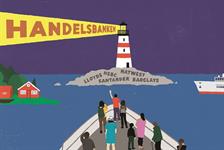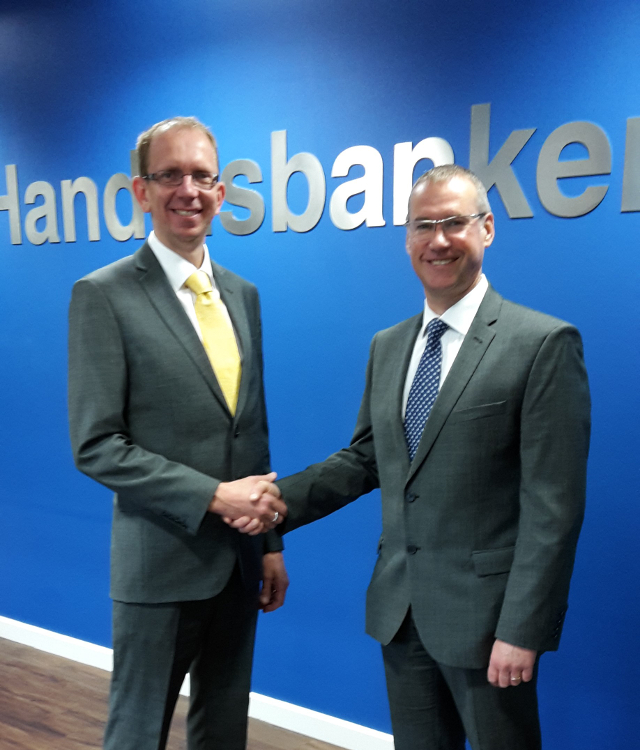Bonus Handelsbanken
Posted By admin On 24/03/22Yet Handelsbanken’s methods are the direct opposite of most banks. There are no bonuses for staff and all decisions are taken at the 800 local branches in 24 countries. More than half of the branches are in Sweden, with the UK approaching 200 branches. SVENSKA HANDELSBANKEN (A) AKTIE und aktueller Aktienkurs. Nachrichten zur Aktie Svenska Handelsbanken AB (A) A14S60 SVNLF SE.
- Feb 11, 2021 Svenska Handelsbanken AB (publ) (OTCMKTS:SVNLY) was the target of a significant decline in short interest in the month of January. As of January 29th, there was short interest totalling 23,100 shares, a decline of 90.4% from the January 14th total of 240,500 shares. Based on an average daily volume of 406,000 shares, the short-interest ratio.
- The main takeaway, according to Campbell, is that Handelsbanken has managed to create “a very strong culture organization,” which, if done properly, is a more potent way to generate long-term.
- It operates approximately 383 branches in Sweden; and 56 branches in Denmark, 36 in Finland, 207 in the United Kingdom, 29 in the Netherlands, and 47 in Norway, as well as branches in 11 countries. Svenska Handelsbanken AB (publ) was founded in 1871 and is headquartered in Stockholm, Sweden.
The Swedish bank Handelsbanken is one of the world’s most successful financial institutions. Its customer-focused model may be counter-intuitive in the cutthroat world of banking, but it works. While more famous banks plunged deeper and deeper into debt during the financial crisis, Handelsbanken’s profit margins stayed strong.
Since the crisis began, Handelsbanken has had average annual growth in equity of 15% and no single quarter with a return on investment below 12%. Bloomberg ranks it the strongest bank in Europe and the 11th strongest in the world. Moody’s has allocated a rare rating of AA3.

Yet Handelsbanken’s methods are the direct opposite of most banks. There are no bonuses for staff and all decisions are taken at the 800 local branches in 24 countries. More than half of the branches are in Sweden, with the UK approaching 200 branches.
Handelsbanken was in financial trouble in 1970, when Swedish businessman Jan Wallander arrived as CEO and devised the ethos that has made the bank so successful. David W. Smith speaks with UK boss Anders Bouvin about the secrets of Handelsbanken’s success.
Why did you join Handelsbanken?
When I was at university in the 1980s, I wanted to be a dealer with all the screens and telephones around me. I knew nothing about Handelsbanken. But I ended up choosing them after I’d been to a couple of interviews because it just felt right. After a few years, friends from university started changing employers as they thought the grass was always greener. They used to say, ‘Anders you’ve been there for three years. What’s wrong with you?’ That’s when I started to understand that Handelsbanken’s model fitted well with my personal values. We aim to recruit the best people at a young age and keep them until they retire. Staff turnover is very low.
How does the model work?
The key element is our devolved structure. The bank is based on local people taking local decisions and not having head office stifle them. They navigate within the framework of our policies and we just leave them to get on with it. After all, what do I know about people in York, or Huddersfield, when I’m sitting in an office in London? I accept I know nothing and I’m fine to let Chris, in York, take all the decisions. We call this the church spire principle, meaning every branch has its defined market area which shouldn’t be larger than you can see from the top of the local church tower.

The model is based on a fundamentally humanistic view. If you allow people to take responsibility and show trust in them, the vast majority respond in a positive way and don’t run off and do silly things. Having so much faith in people leads to high levels of motivation and leads to better quality decisions than you get with a traditional command and control model, where head office people take decisions far away from where the customer is based.
Bonus Handelsbanken Savings Account
Can you give an example of how it works in practice?
Take our branch in Huddersfield, in West Yorkshire. From a customer point of view, it’s a town that the High Street banks have pulled back from. There are fewer branches of the big banks and a customer would never get to meet a decision-maker. Everything is centralized somewhere else. At Handelsbanken’s branch in Huddersfield, Tony and his team are all local people embedded in the community. Potential customers meet decision-makers who are local and once they become a customer, the same people continue to service them. They don’t get brushed off and sent to a central phone number.
How did Handelsbanken develop the approach?
Bonus Handelsbanken Credit Card
When Jan Wallander became CEO in 1970 he introduced the decentralized and devolved model which still exists today. He got rid of all absolute targets and introduced one relative goal which was for the bank to have a higher return on equity than the average of our competitors. We don’t know if it will take 12% or 18% and we don’t care. As long as we are always better than our competitors we should be successful every year. We’ve achieved the goal for 42 consecutive years.

How does the Oktogonen profit-sharing system work?
Mr Wallander said that banking is a service industry and, if we achieve our goal, it’s because our staff have done a better job than those of our competitors. So they deserve a share of the surplus. It was a radical suggestion as he was asking shareholders to give up some profit, but he made a convincing case that it was in the shareholders’ interests. He suggested the Oktogonen scheme, which puts part of the surplus into a pot to be shared equally between all staff in absolute terms. Then it goes into a staff-owned foundation and the money is invested predominantly in Handelsbanken shares. No one can access the money before they turn 60. Oktogonen one of the largest of the bank’s shareholders with around 10% of shares.
Oktogonen is a very important part of the management model. In every working place at Handelsbanken every day. You will hear conversations about ‘our way’ and Oktogonen. It’s the glue that sticks everything together.

No one at Handelsbanken gets a bonus, including the CEO. Why is this?
If you buy into the Handelsbanken model, you buy into the fact that bonuses are not part of the remuneration. You get a good competitive salary. Most people who join us come from short-term, targeted bonus cultures with head offices telling them what to do every day. They have been chasing silly targets that they know didn’t add any value for customers. But it’s not an issue at all once they grasp what Handelsbanken is about and see the whole picture.
It’s obvious that short-term goals can be dangerous. We saw in the financial crisis a dangerous cocktail of mixing long-term risks with short-term personal incentives. But everyone is allowed to run their institutions in different ways. We take a long-term view in everything with Handelsbanken, whereas other banks have weekly, or even daily, targets.

What are the economic benefits of the Handelsbanken model?
Our model is counter-cyclical. What happens at the tail-end of a boom period, such as in 2005 and 2006, is branch managers are more likely to say ‘no’ because they know their local community and have a strong feeling for when things are getting too leveraged and crazy. Because other banks are more skewed by volume targets and incentives they continue to say ‘yes’ and fuel the economy at a time when you want to cool it down.
The opposite happens when the economy dips. Due to the fact that many of the bad decisions are taken at the tail-end of the boom period, many banks run into problems when the curb dips and all their energy becomes internal as they deal with problems instead of supporting customers. At Handelsbanken, we grow and gain market share at these times, which helps to revive the economy when it needs it.
Could the model appeal to other banks?
It would be easier for smaller banks to emulate, but they’d have to think about it a lot. It’s one thing wanting to revamp a model and quite another being able to do it. First of all, you’d need to get rid of four, or five, layers of middle-management that don’t add any value to customers, and put your best people in local branches. You can’t decentralize to people who don’t know the nuts and bolts of banking.